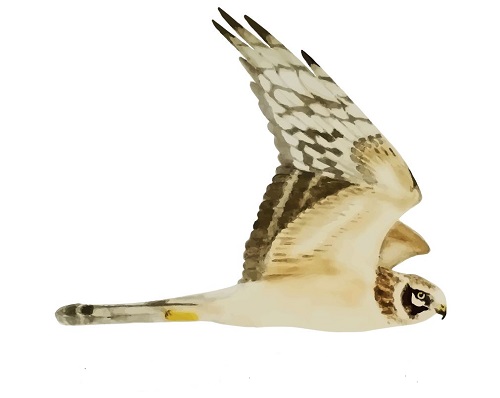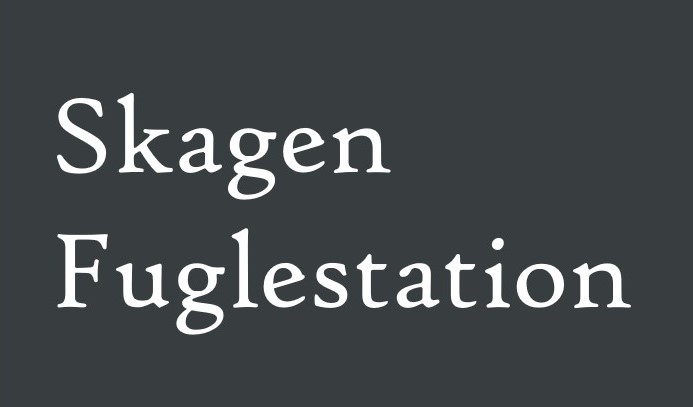Her på Skagen Fuglestations blog bringes korte nyheder i dagbogsformat om hændelser på fuglestationen.
Se indlæg fra måned: jan. (2)feb. (3)mar. (31)apr. (30)maj (31)juni (30)juli (31)aug. (31)sept. (30)okt. (31)nov. (30)dec. (9)
Morgenobs og endeligt farvel
Godaften kære bloglæsere, her følger en beretning for dagen.
Jeg havde pakket tasken og madpakken i god tid og startede dagen ud med æg og kaffe. Det er jo altid skønt. Derefter tog jeg med pænt høje forventninger på Grenen. Jeg forsøgte mig først med at sidde allerøstligt på Verdens ende 1 da jeg troede der måske ville komme udtræk fra kattegat op langs sydkysten. Det gjorde der ikke og jeg relokerede derefter til Verdens ende 3 hvor Knud sad.
Knud havde godt gang i kliktællingerne og mens vi talte fik vi vendt det meste mellem himmel og jord, særligt "de gamle dage", da jeg var på stationen i 2021 hvor Knud og jeg brugte mange timer med træktællinger blev vendt.
Vi fik også fornemt besøg af Jørgen og Igor, og med det gode vejr var der ikke nogle mangler på denne morgenobs.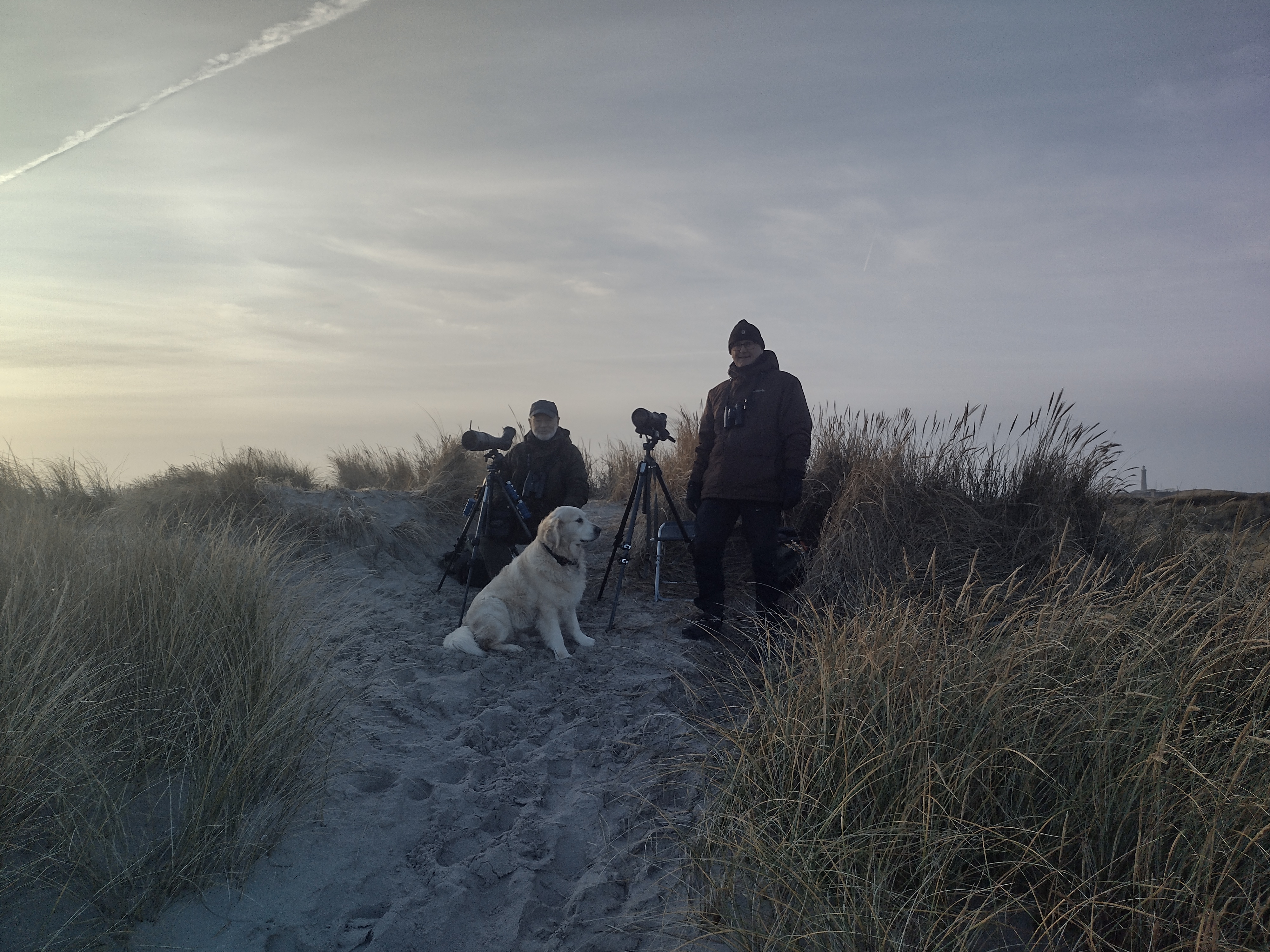
Fugle var der da også nogle af og morgenen endte godt ud med både Islom, bjergpiber, sildemåge, kaspisk måge, sortstrubet bynkefugl og en hvid vipstjert.
Se dagens obs her
Hjemme på stationen efter obs fik jeg pakket det sidste, støvsuget og Simon og jeg fik ryttet ud i køleskabet.
Det var som altid en fornøjelse at være på besøg i det høje nord. Nu vil jeg sige tak for denne gang også kan vi jo alle, i disse mørke dage, glæde os ved at foråret nok skal komme engang.
Folk på stationen: Knud Pedersen, Jørgen Kabel, Igor, Simon S. Christiansen, Jonas Pedersen
Skagen melder storm
Hej allesammen, som sagt ankom jeg et par dage siden for at forsøge at få birdet lidt her i min læseferie.
Desværre har vejret ikke været med mig og idag var ikke en undtagelse.
Tidligt om morgenen forlod Florian og Miles station og senere omkring middagstid tog János og Amira også afsted.
Jeg forsøgte mig med lidt obs fra den åbne bunker tæt ved grenen camping og det gav ikke det store, det blæste og regnede virkeligt meget og jeg var kun derude i en halvanden time. I løbet af dagen blev der målt op til 17 m/s middelvind og det er da en pæn sjat.
Se dagens obs her
Tilgengæld havde jeg ingen undskyldning for at få kigget lidt på mine studier og det gik der da også noget tid med. Sammentidig fik jeg klaret alt det overskydende vasketøj fra sæsonen samt ryttet op hist og her.
Imorgen bliver vejret bedre og jeg håber på at en "efter stormen" effekt kan give en spandfuld fugle.
Vi ses til flere løjer imorgen
Jonas out
People: Miles Scheuering, János Schadl, Florian Hatt, Amira Nuseibeh, Simon S. Christiansen, Jonas Pedersen
I'm no good at goodbyes
Today is the last day at the station for the fall crew (though Jonas will be here for a few days), so the feeling is bittersweet. We have had such a wonderful time here, so it is hard to leave. This morning was especially sad, because Lise left, a day ahead of the rest of us. Fortunately, she did not leave first thing, and we enjoyed a nice breakfast with her and Frey before their parents (Birgit and Morten Mastrup) arrived. Simon also came to the station, and we had our last talks, while Lise, Frey, Birgit, and Mastrup went up the lighthouse. Upon their return it was time for goodbyes. It has been so lovely with Lise here, so it was rather tearful to say goodbye.

A final photo of the crew. Photo by Jonas
We consoled ourselves by going out for a last walk in the area in the afternoon. Despite the rain, Jonas had gone out in the morning for some observing. The conditions were not so good, but Black-throated Diver (Sortstrubet Lom) and Long-tailed Duck (Havlit) were nice highlights. He joined us for our walk, and we went out along the beach to the tip, then turned east and walked to Nordstrand, before returning on the path past Jennes Sø. It was great to see Kittiwakes (Ride), Red-throated Divers (Rødstrubet Lom), including some passing directly overhead, and Red-breasted Mergansers (Toppet Skallesluger). It drizzled on and off throughout, but it was so nice to get out for a few hours. On the way back from Jennes Sø, we spotted a Eurasian Goshawk (Duehøg), which was probably the highlight of the outing. It was the first time Amira has seen one in Denmark, and only the second time I’ve seen one here!

Walking out to the tip of Grenen. Photo by Miles
After returning, we had a quick evening meeting with Simon to wrap things up, before playing some ping pong! It is only the second time I have played while being here, the first being with Janna Ouedraogo back in September. Our games were quite spirited but not too competitive, and it was quite fun. Afterward, we ordered pizza for dinner and have been putting the finishing touches on packing and cleaning.

A farewell from the Christmas fulmar (Mallemuk), Lise, and Amira. Photo by Miles
Standard ringing finished
Link to today’s observations from the area.
People: Miles Scheuering, János Schadl, Florian Hatt, Amira Nuseibeh, Simon S. Christiansen, Jonas Pedersen
Redstart, Risengrød and a Really cold swim!
This morning was VERY grey but most importantly, rainless and so János, Florian and I were keen to venture out along the beach and towards World’s End 3. We did some very relaxed seawatching for a couple of hours and, although it was generally not a busy day for migration, we had some lovely highlights, including a beautiful Black Guillemot (Tejst), a Black-throated Diver (Sortstrubet Lom) and some porpoises (Marsvin) popping up between the waves from time to time.

Florian checked the bushes behind the first line of dunes for rare buntings and saw a nice Hen Harrier (Blå Kærhøg) and then we then headed out to the tip and along the beach, where there were plenty of Sanderling (Sandløber) and the tide was much lower than yesterday, leaving lots of seaweed, rubbish and animal bones on the beach.
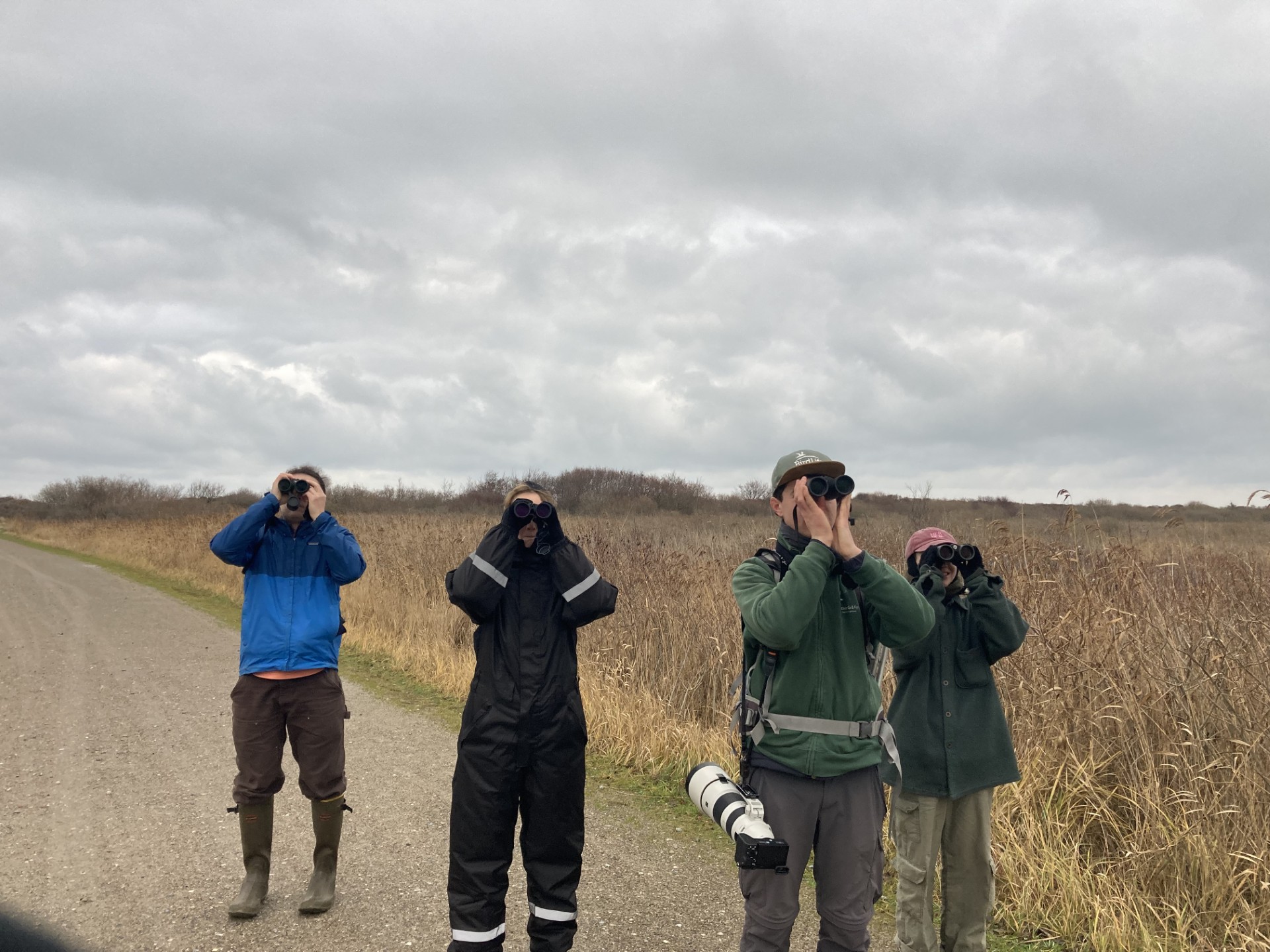
On our way back to the bird observatory, we met Miles, Lise and Frey and walked back together to have lunch. Miles had been for a nice morning run past Jennes Sø and the Nature Centre and then the three of them had walked to Kabeltromlen and spotted lots of Bullfinch (Dompap), Starlings (Stær), a Sparrowhawk (Spurvehøg) and heard some Bearded Reedlings (Skægmejse). Then the afternoon was dedicated to deep cleaning our lighthouse apartment ready for the end of the season. We scrubbed and vacuumed every corner, wiped every window and surface, and even took the carpets outside for a shake.
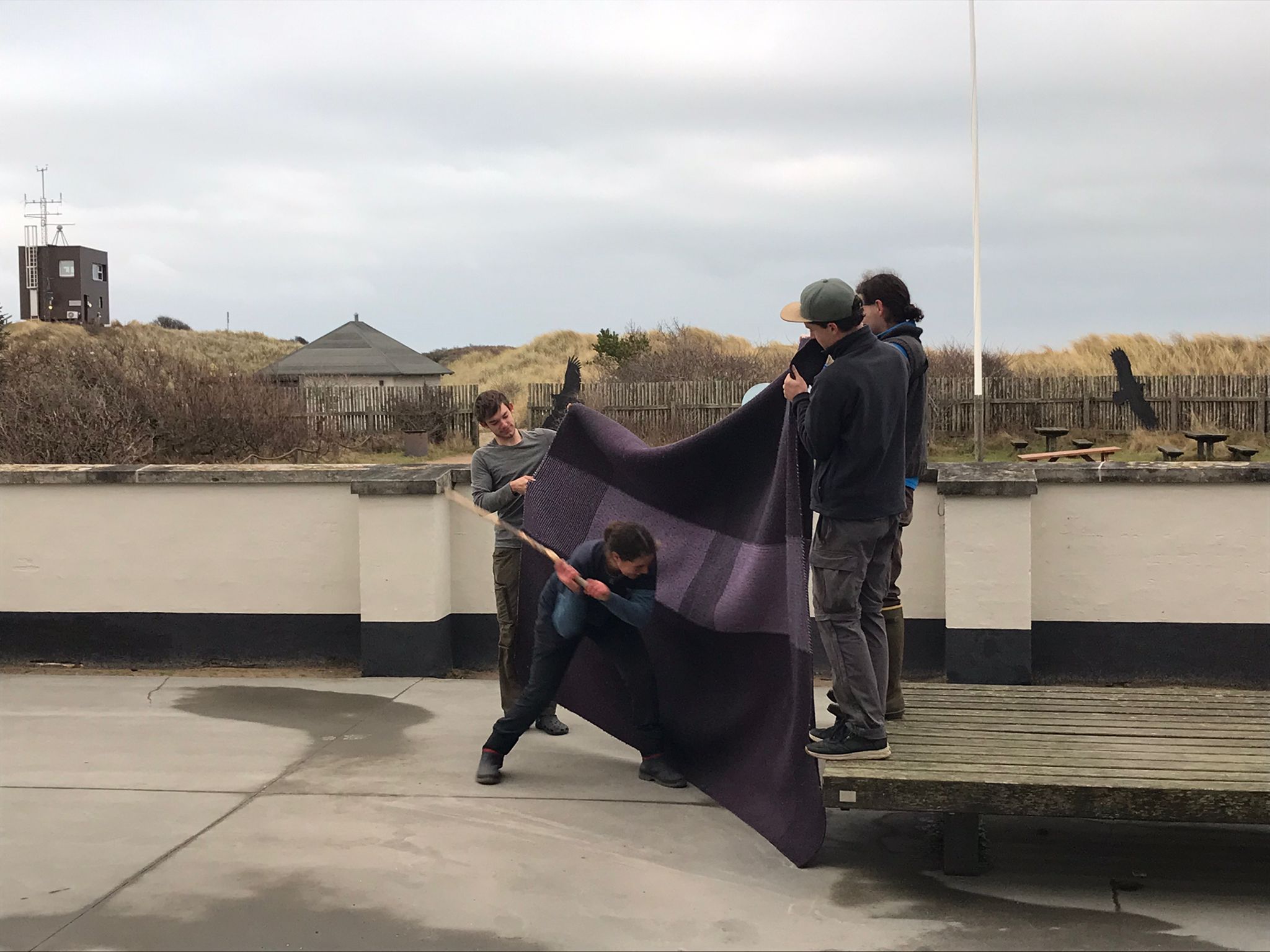
Just as János and I were whacking the carpets to shake out all the sand, we heard an interesting bird call in the courtyard of the lighthouse. János recognised the call as a Black Redstart (Husrødstjert), so we immediately dropped our carpet and stick and searched the skies around us. It flew across from the roof of the bike shed to the roof of the lighthouse and then dropped down out of sight and we never found it again. Without our binoculars with us we could only say that it looked like a female-type Black Redstart, which is slightly frustrating because at this time of year it could quite possibly be the much rarer central Asian subspecies (phoenicuroides).
Once we’d finished all our cleaning duties, Miles and I went for our final sea swim of our stay in Skagen. It was definitely the most challenging and coldest dip of our time here but strangely still really fun, and we even saw a huge orange jellyfish floating in the waves close to us which was very cool! We also welcomed Jonas this afternoon who was a previous volunteer here in Skagen back in 2021. For dinner, Lise and Frey are cooking us all a traditional Danish Christmas meal called Risengrød which already smells delicious.
Today is our penultimate day in Skagen and also sadly my final time writing the blog; I really hope you’ve all enjoyed hearing about our experiences and hopefully I’ll be back again in the future!
Standard ringing finished
Link to today’s observations from the Skagen area
People: Miles Scheuering, János Schadl, Florian Hatt, Amira Nuseibeh, Lise Mastrup and our guest Frey Mastrup
Two Isloms and a Swim
The weather was rather grey again, but since it was dry, Amira, János and I went for a walk to Grenen this morning. Shortly after arriving at World's End 3, we saw a large diver flying towards us. When it was close enough, we could all see that it was a Great Northern Diver (Islom)! It was most likely the individual that Knud had seen resting at Nordstrand a few minutes earlier (whose Zello message we only noticed after the bird had already flown past us). Shortly afterwards, Knud reported another Islom from Nordstrand, which arrived shortly afterwards at Grenen and landed on the water. We tried to get closer and went down to the beach. Unfortunately, we only saw it flying away, but we also spotted a Black-throated Diver (Sortstrubet Lom) migrating northwest. We also checked the gulls and at least spotted one Caspian Gull (Kaspisk Måge) and some unusual dark coloured Herring gulls (Sølvmåge).
Birding at Grenen
On the way back along the Sandormen Track, we observed two Hen Harriers (Blå Kærhøg) fighting with each other! At least one of them was the one with missing feathers in its wing, that had been in the area for a long time now. Meanwhile, Miles was birding in the Industrial Area. A late Blackcap (Munk) was quite a good highlight there!
At noon, we started with doing some cleaning. Today, we worked on the lab and the bicycles. Especially for the latter, it was really needed to do this. Fortunately, this didn't take forever, so Amira, János and I decided to look at gulls and ducks in the harbour.
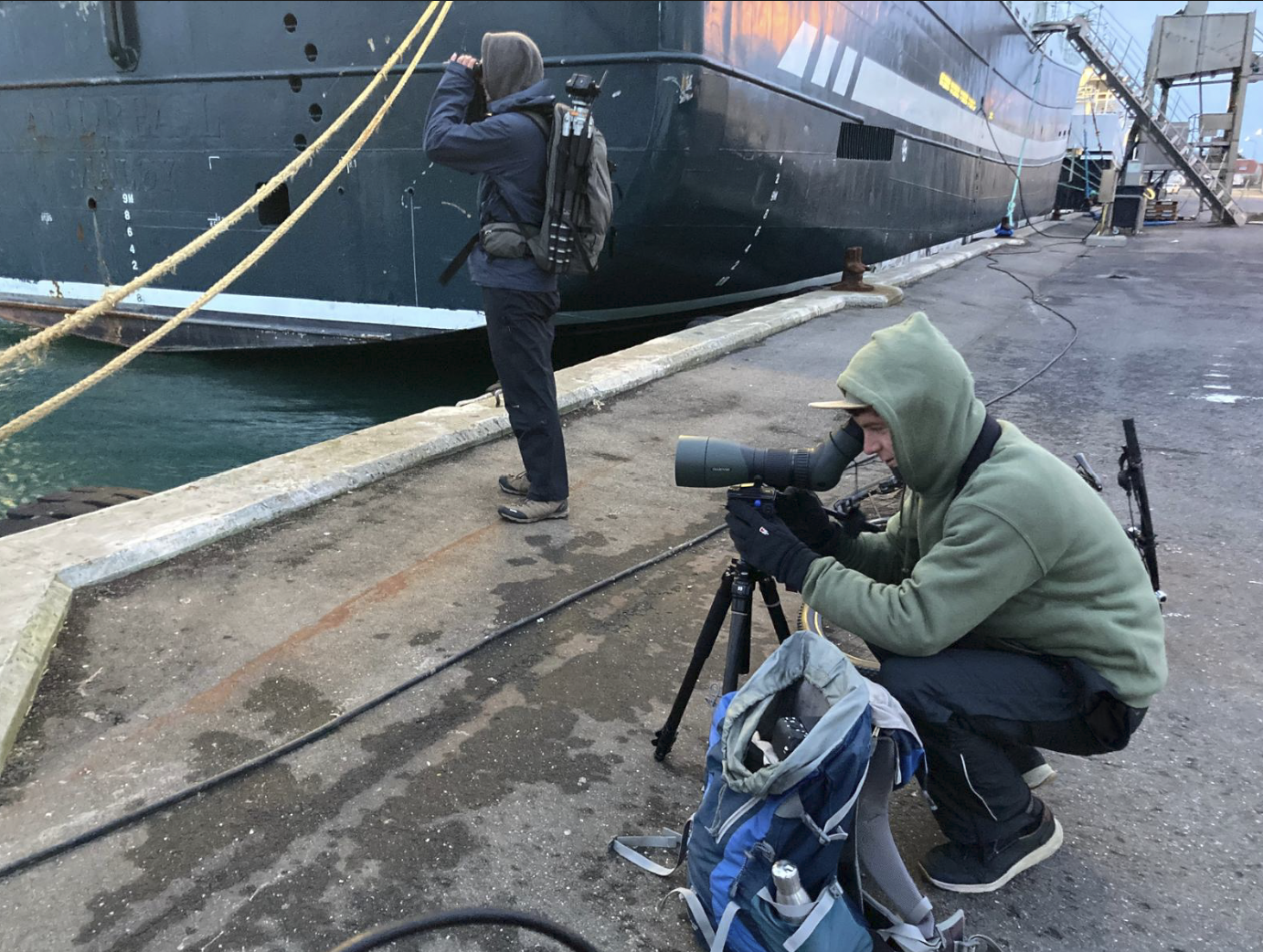
Scanning the Eiders (Ederfugl) in the harbour
Afterwards, we went to the bakery, where Miles and Lise joined us. We had some hot drinks and something to eat. It was very hyggeligt there!
As it was very warm in the bakery, János, Amira and I had to cool off in the sea as soon as we were back at the station. This swim was really refreshing!
In the evening Lise's sister Frey arrived, Miles prepared a delicious dinner and Amira held her presentation about conservation of Bonelli's Eagles (Høgeørn)!
Standard ringing finished
Link to today’s observations from the area.
People: Miles Scheuering, János Schadl, Florian Hatt, Amira Nuseibeh, Lise Mastrup and our guest Frey Mastrup
Lighthouse twitch
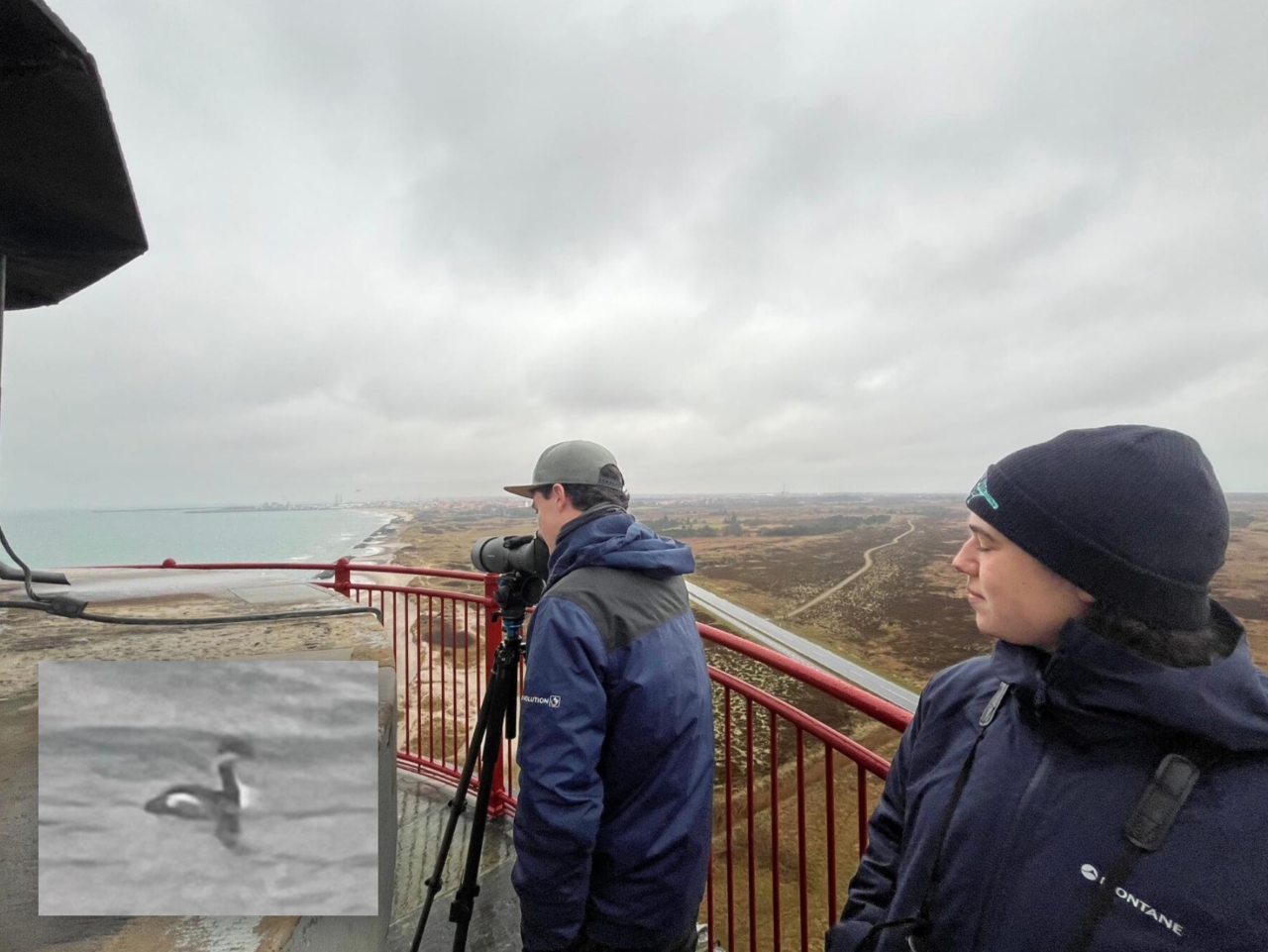

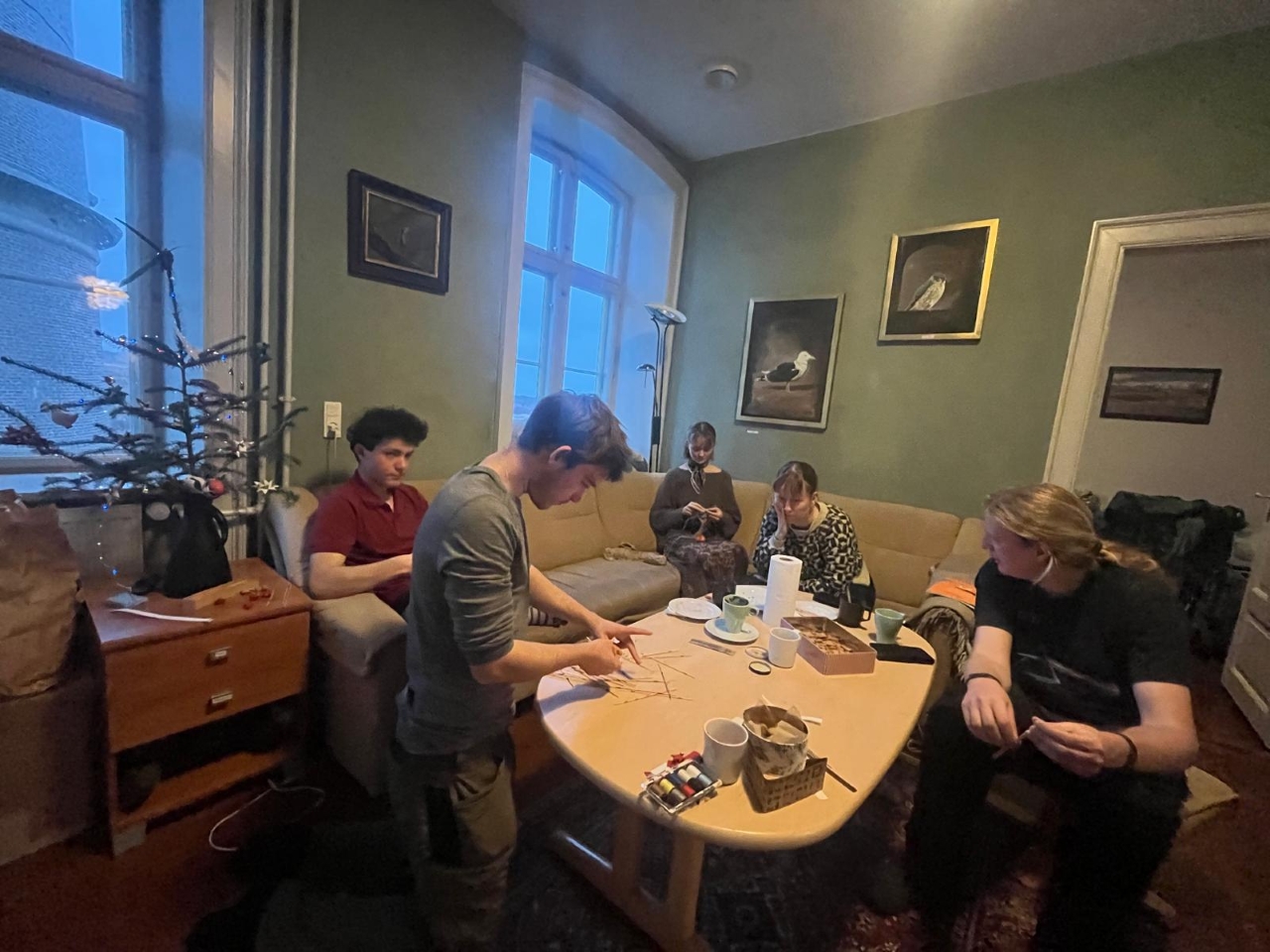
Standard ringing finished
Link to today’s observations from the area.
People: Miles Scheuering, János Schadl, Florian Hatt, Amira Nuseibeh, Lise Mastrup, Simon S. Christiansen
Udflugt
I dag var en lidt anderledes dag her på stationen. Vi tilbragte nemlig det meste af den på udflugt til nogle af de bedste havne og strande Nordjylland har at byde på!
Vi havde Oluf med, som sidder i styregruppen for stationen og venligt havde lagt bil og selskab til dagens køretur. Klokken lidt over 9 gik det afsted til første stop; Aalbæk havn. Her fik vi en god start med både isfugl, en lomvie som svømmede omkring inde i havnen, flere sandløbere, skærpibere, en toppet lappedykker og (som håbet!) en masse dejlige måger. Sidstnævnte kunne vi øve os på at arts- og aldersbestemme ovenpå de to meget lærerige oplæg fra Florian og János i går aftes.
Herefter fortsatte vi videre mod Jerup strand. Denne bød på blandt andet gravænder, hvinænder, blå kærhøg og en masse flere strandskader (i alt talte vi 133). Højdepunktet her var dog uden tvivl, da vi langt ude både hørte og så en helt enorm flok gæs på træk. Disse kom fra land og fløj ud mod kysten, hvorefter de fortsatte henad kystlinjen, så der var mulighed for at følge dem et stykke. I alt blev der talt 402 grågæs, 61 bramgæs, 7 blisgæs og dertil 2 kortnæbbede gæs. Det var et fantastisk dejligt syn at se denne mængde følges ad alle sammen.
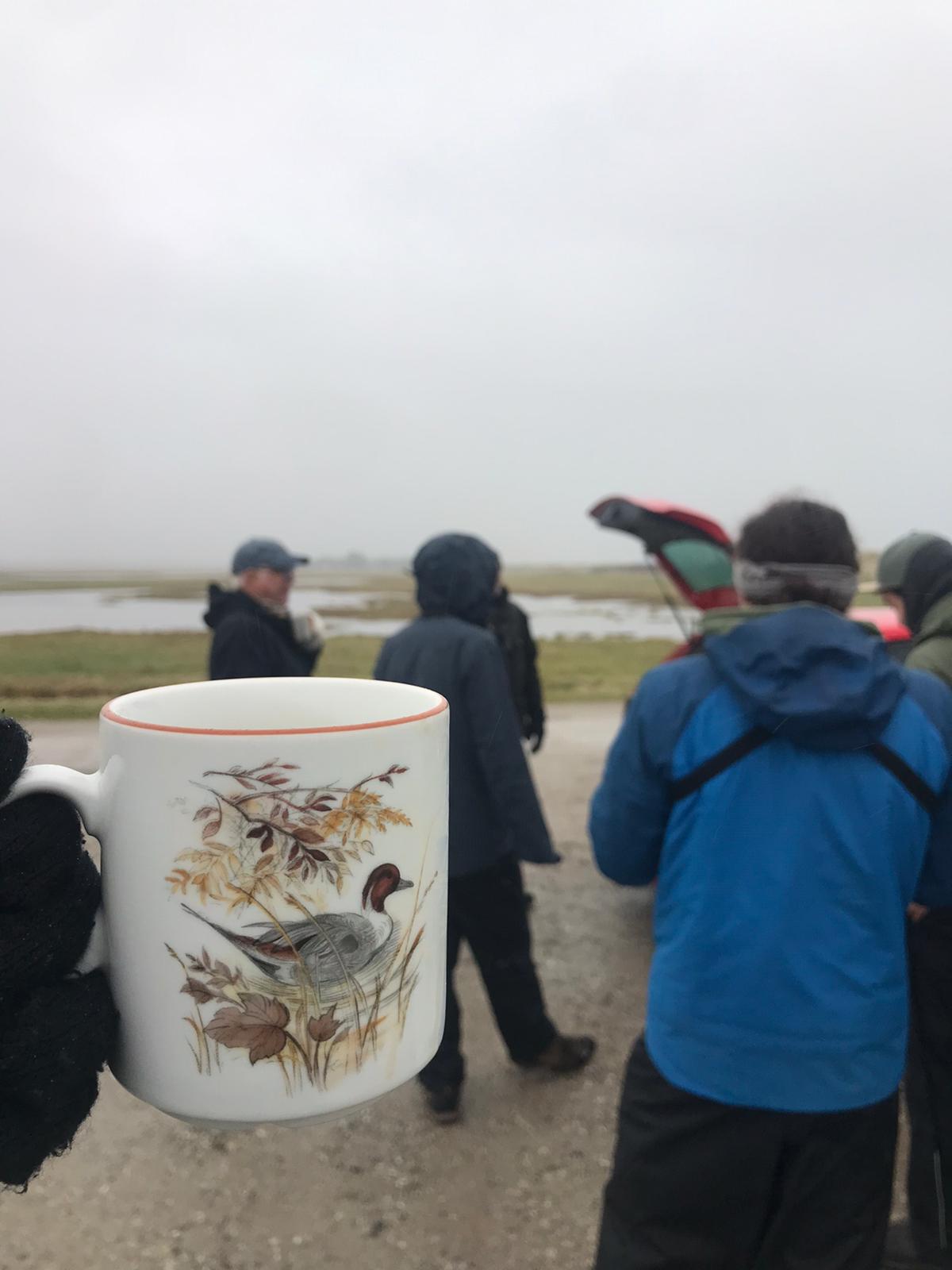 Spidsanden var også med i dag på kaffekoppen under frokostpausen.
Spidsanden var også med i dag på kaffekoppen under frokostpausen.
Vi kørte så til Strandby, hvor der var en udsigtspost på havnen. Herfra kunne vi se flere måger, ederfugle og skarver. Lige nedenfor udsigtsposten på havnefronten gik 4 stenvendere. De var kun meget lidt sky, hvilket betød at vi kunne se dem helt tæt på. En lille gåtur ved havnens yderside kunne betale sige, da Miles her spottede to sortgrå ryler, som sad helt runde og skuttede sig for støvregnen.
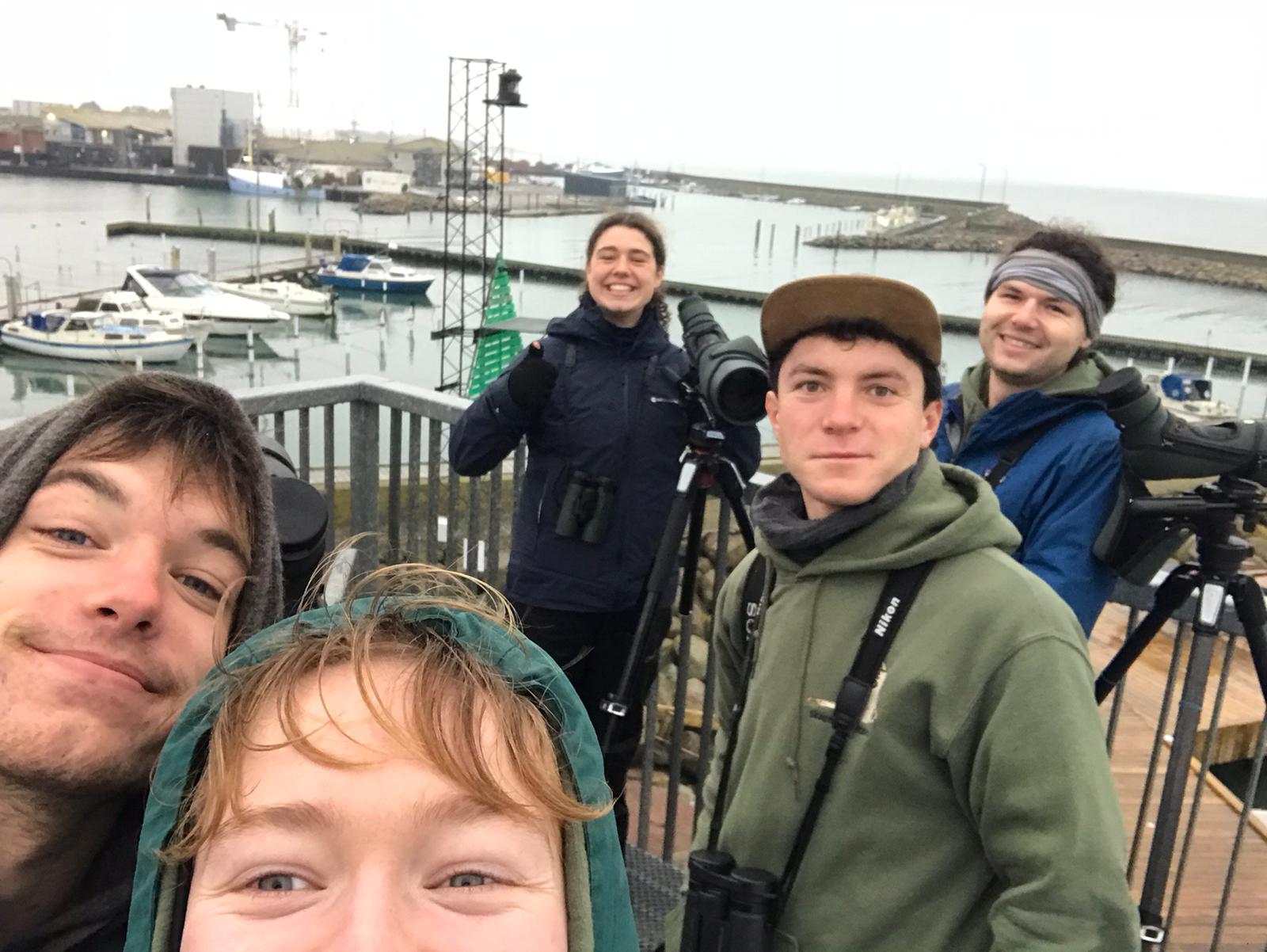 Fra toppen af udsigtsposten på Strandby havn.
Fra toppen af udsigtsposten på Strandby havn.
Dagens sidste stop var Frederikshavn, hvor der i længere tid har opholdt sig en hvidbrystet præstekrave. Eftersom den var set tidligere på dagen, var vores forhåbninger om at genfinde den selvsagt ikke alt for lave. I første omgang så vi en masse andre skønne fugle; rødben, almindelige ryler, sandløbere og strandskader gik blandt hinanden på en vadeflade. En isfugl fløj flere gange forbi over vandet, hvor der lå gravænder, knortegæs og toppede skalleslugere. Sidstnævnte er altid en favorit og årsag til begejstring blandt holdet her. En spurvehøg og dobbeltbekkasiner lagde også vejen forbi. Ovenpå alle disse var der godt humør og høje forventninger til den hvidbrystede præstekrave. End ikke lidt regn og stadigt mindre dagslys kunne tage håbet fra os. Flokken af vadere blev gennemsøgt fra forskellige lokationer og da vi lidt våde og nu også en smule trætte stadig ikke havde fundet den, blev det besluttet at give det et sidste forsøg. Vi gik hen ad vadefladen for at komme lidt tættere på flokken derude og pludselig sagde János køligt, men begejstret at ”here it is!”. Og ganske rigtigt havde han netop da en hvidbrystet præstekrave i skopet. Vi fik den alle at se og for Miles markerede dette hans fugleart nummer 800, som han har set i år! Tillykke!

Hvidbrystet præstekrave.
Denne blev da også dagens sidste fugl, da solnedgang nærmede sig og vi derfor vendte tilbage til bilerne for at køre hjem til stationen. Alt i alt en skøn dag, med masser af oplevelser, fugle og som altid dejligt selskab:)
Folk på stationen: Miles Scheuering, János Schadl, Florian Hatt, Amira Nuseibeh, Lise Mastrup, Simon S. Christiansen, Oluf Lou
A late red kite
The weather was not so nice this morning, but Florian, János, and Amira still had hopes to get out for some observing before settling in with computer work and cleaning. It was quite windy when Amira cycled to and from the pool, but then rain started shortly after, so they decided not to go out. I woke up early to have a meeting with a friend back in Oregon, then I went back to sleep and had a proper lie in. Around 9 I got up and frosted the pumpkin cake I baked last night. We all enjoyed it as a midmorning snack, and it was quite cozy in the living room, wrapped up in our blankets. We also had a researcher from Aarhus University stay in the apartment overnight. This morning, Lise helped her collect the snails and frozen fulmars (mallemuk) to bring back to Aarhus for analysis.
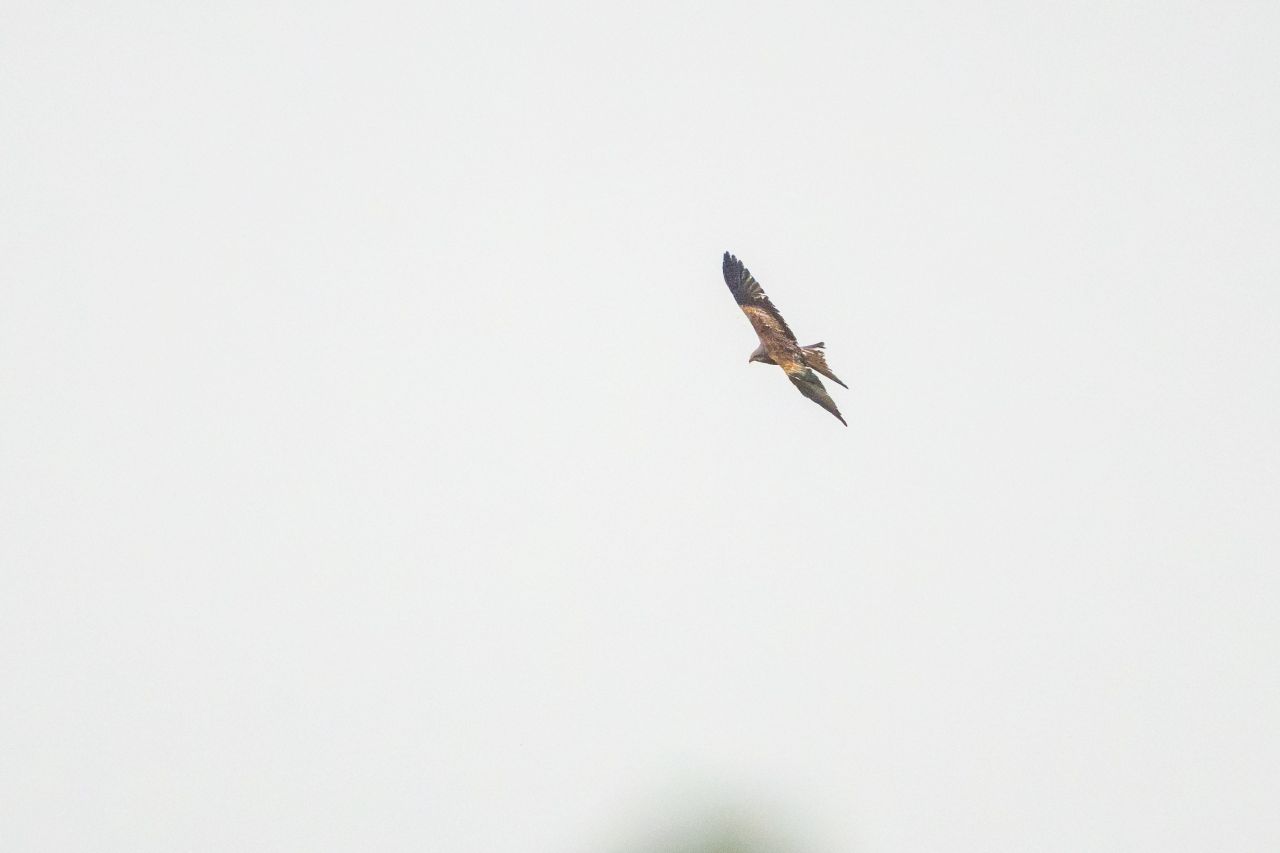
Red Kite (Rød Glente) at Nedermose. Photo by Florian
The rain let up later in the morning, so Florian, Amira and I went out on some outings. Amira and I walked first to Kabeltromlen, then further on the path to Worlds End 1, through the dunes to Worlds End 3, and then back along the beach to the sandormen track. It was extremely windy, but we still saw a nice Hen Harrier (Blå Kærhøg) and a flock of Bohemian Waxwings (Silkehale). Meanwhile, Florian took a walk out to the nature center, where he spotted a very late Red Kite (Rød Glente). This is the first that has been reported in Skagen in December (according to DOFbasen)! We have had strong winds from the south recently, so it was likely blown up from further south in Denmark. Other highlights from the walk were Crested Tits (Topmejse) and a Common Chiffchaff (Gransanger).

Pumpkin cake that I baked. Photo by Miles
In the afternoon, Simon came to the station and we sorted and cleaned the living room and various drawers. It took some time but there were several items that the station did not need, which we were able to take. Amira found a lovely moth poster, a jumper, and some sunglasses!
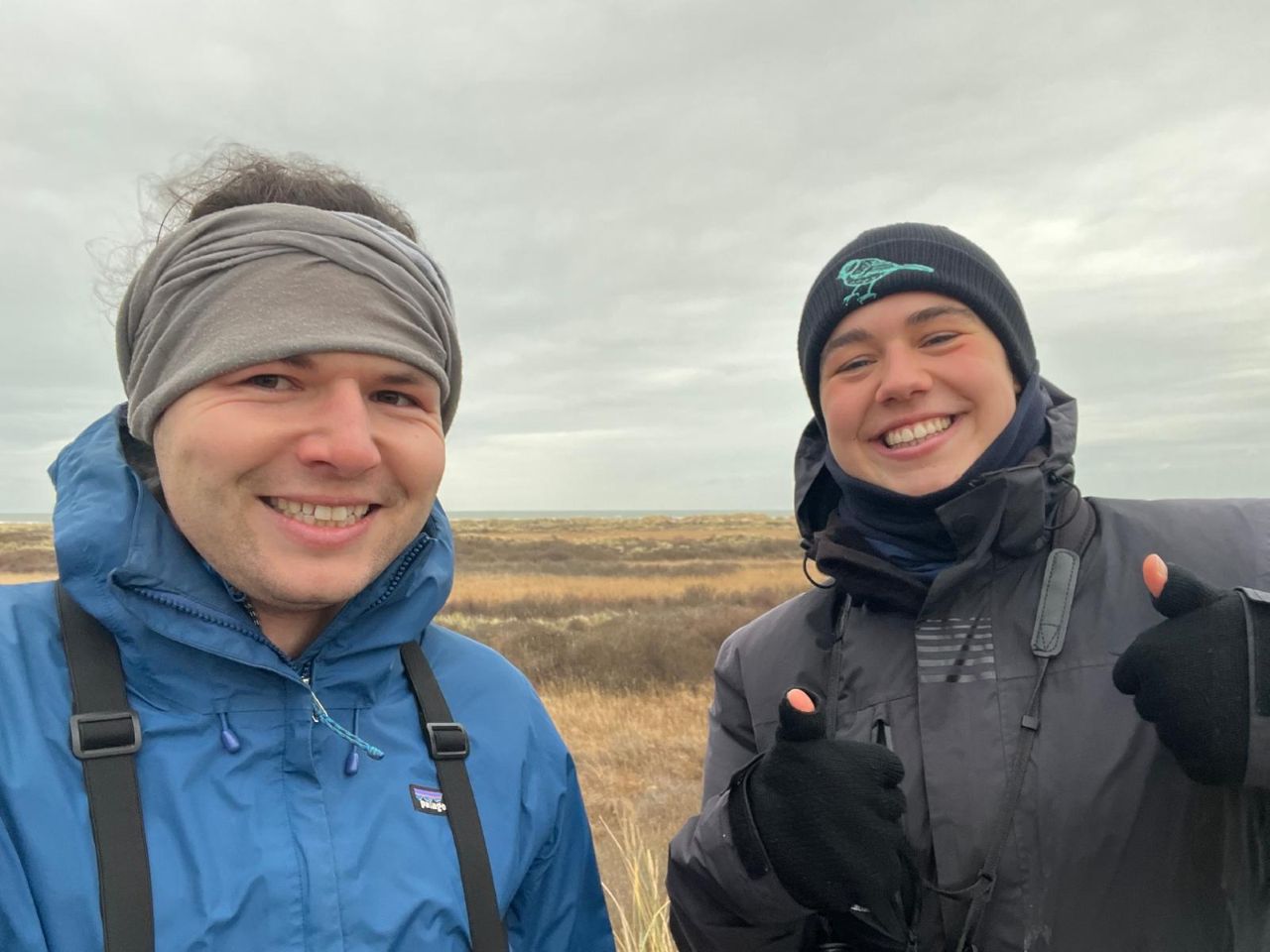
Amira and I at Worlds End 1 during our morning walk. Photo by Miles
Amira cooked us a delicious dinner of jacket potatoes (a quintessential English dish) and afterward, Florian and János gave great sessions on gulls (Måge). Tomorrow we are taking an outing to several harbors in the area, so it was great preparation for this trip. Florian focused on small gulls, especially rarer species, while János focused primarily on aging of our most common large gulls. We are very excited to apply what we learned during our outing tomorrow.
Standard ringing finished
Link to today’s observations from the area.
People: Miles Scheuering, János Schadl, Florian Hatt, Amira Nuseibeh, Lise Mastrup, Simon S. Christiansen
It's beginning to look a lot like Christmas...
Today, lots of us woke up in a very good mood after yesterday’s observations and nightcatching successes. Although the standard observation season has now ended, Florian, János and I were still keen to take advantage of the brilliant weather this morning and headed out to World’s End 3 at dawn for a few hours of seawatching. The tip of Grenen is one of my favourite places to be at sunrise because the pools of water and the tops of the waves shimmer like gold, the beach is dotted with resting gulls (måge), the Sanderling (Sandløber) are happily scampering, and almost always there isn't a single other human around!
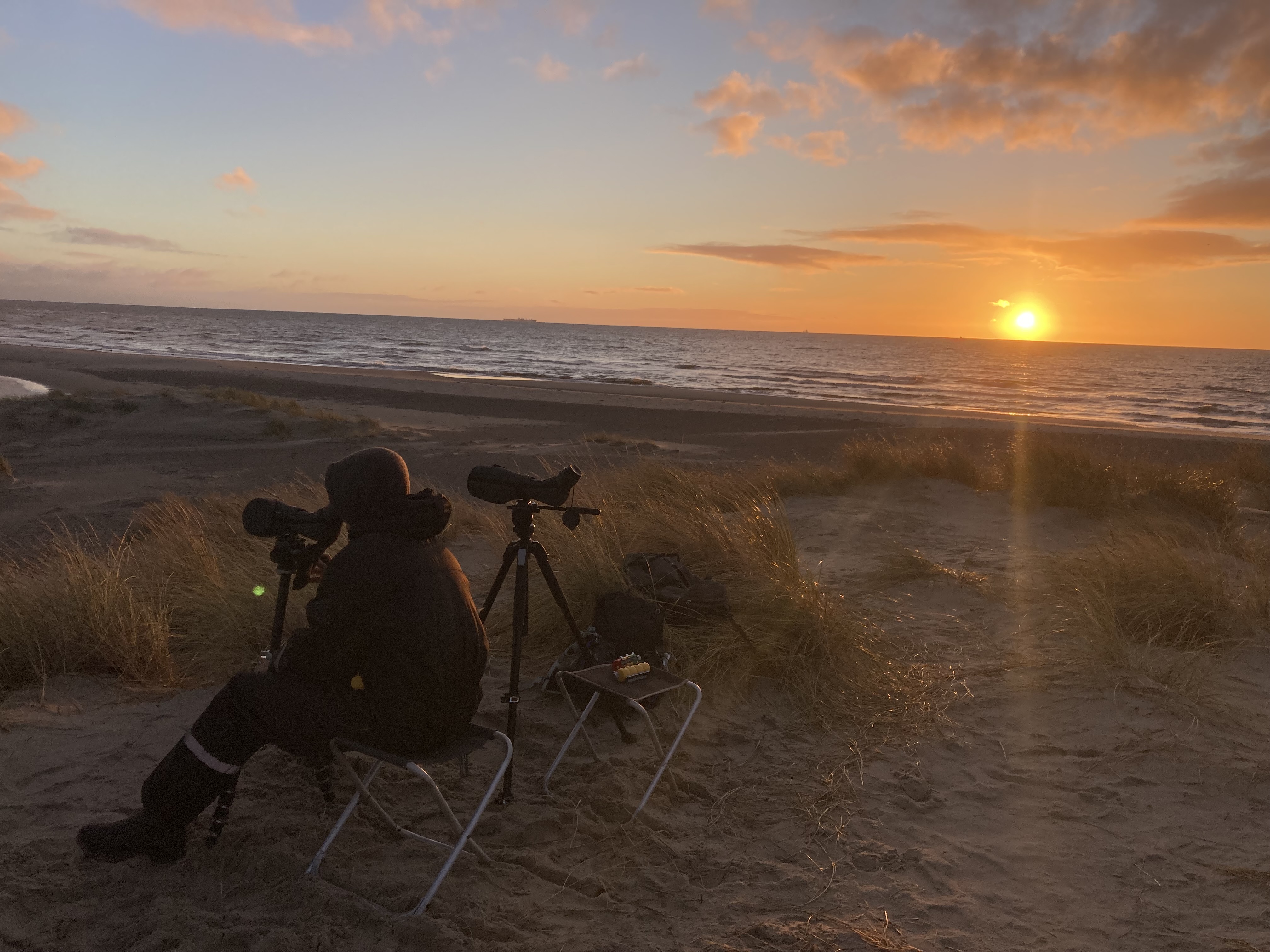
Although we technically didn’t have to be counting everything we saw, we couldn’t resist clicking the Auks (Alk/Lomvie), Kittiwakes (Ride), Divers (Lom), ducks and Gannets (Sule). There weren’t as many Red-throated Divers (Rødstrubet Lom) as yesterday, but yet again the record for Autumn high count of Guillemots (Lomvie) was broken with 2497 migrating past today (counted by Knud)! How crazy!
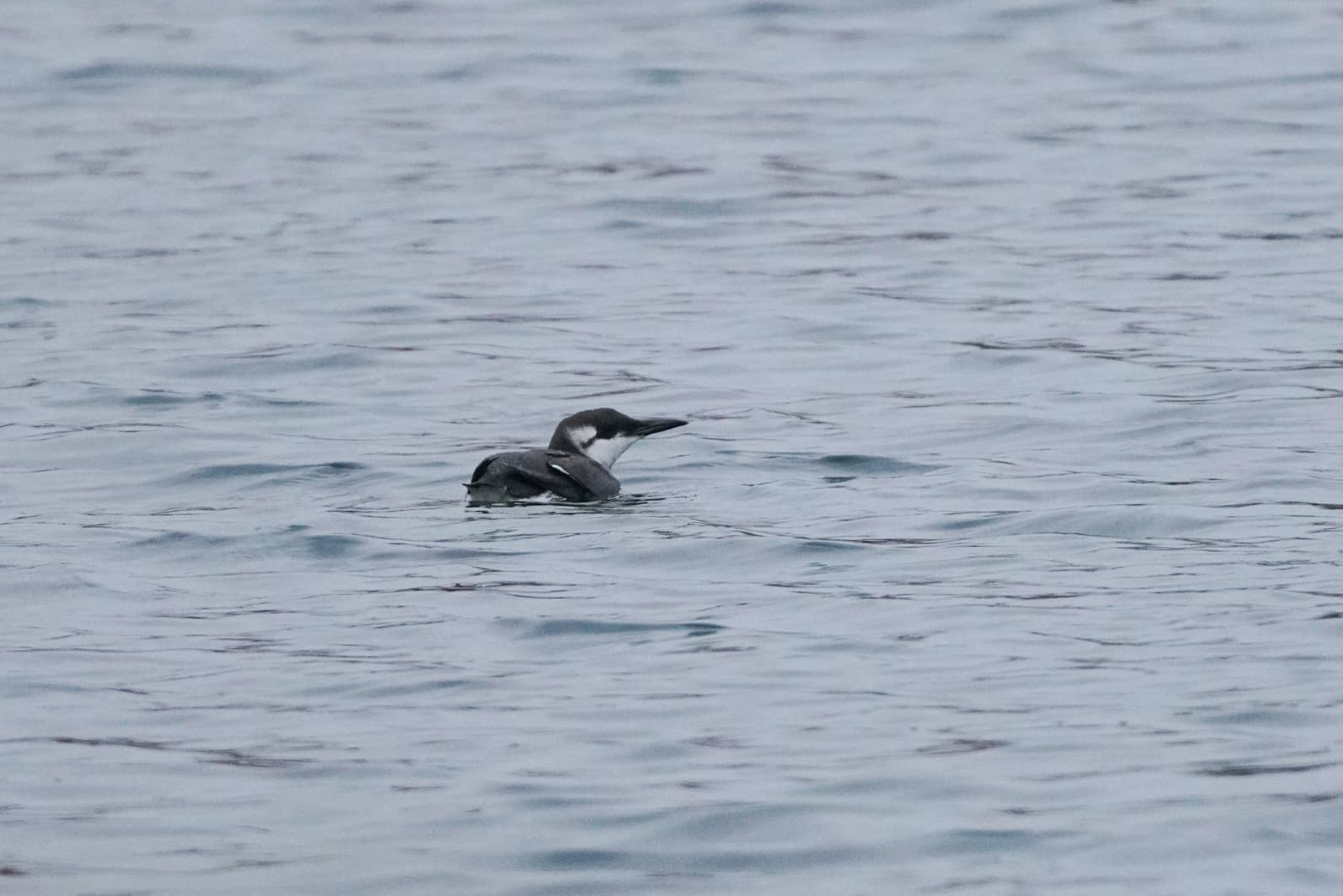
As well as the many auks, we also had a nice mix of our favourite usual birds like Velvet Scoter (Fløjlsand), Sparrowhawk (Spurvehøg) and Waxwing (Silkehale). However, after a couple of hours of counting, it was time for us to head back to the lighthouse so that we could start the big cleaning and sorting process needed to pack down the bird Observatory for the Winter. We all leave at the end of this week and there’s so much to do before then! However, Florian, János and I all made a reminiscent stop at Kabeltromlen on our way home, where I was very excited to spot a Firecrest (Rødtoppet Fuglekonge) without a ring in the bushes!
A big group effort meant that we finished our cleaning and tidying jobs quite quickly this afternoon, and so Lise and I both had time to go for a lovely run, whilst János scrolled on Xeno Canto, Miles went grocery shopping, and Florian made his family calendars for Christmas using photos he has taken himself. Now, we’re awaiting a delicious sweet potato and chickpea bowl dinner being cooked by Miles and enjoying our wonderful Christmas tree which we’ve now covered in glittery and shiny paper stars; it’s beginning to feel a lot like Christmas!

Standard ringing season has finished for 2025!
Link to today’s observations from the Skagen area.
People: Miles Scheuering, János Schadl, Florian Hatt, Amira Nuseibeh, Lise Mastrup, and Simon S Christiansen.
Streams of Red-throated Divers
It was another rainy morning in Skagen and after some indecision, Amira, Miles and Florian decided to bike to Nordstrand. However, it rained continuously at the beginning and visibility was relatively poor due to the fog. After about an hour, the rain stopped and visibility improved. With the good weather came the birds. Endless streams of Red-throated Divers (Rødstrubet Lom) and Guillemots (Lomvie) kept the observers busy. Other highlights were Black-throated Diver (Sortstrubet Lom) and Long-tailed Duck (Havlit). Today was the last day of the standardized observation and in the end a new autumn record was set with 760 Red-throated Divers (Rødstrubet Lom) and 1297 Guillemots (Lomvie) each!
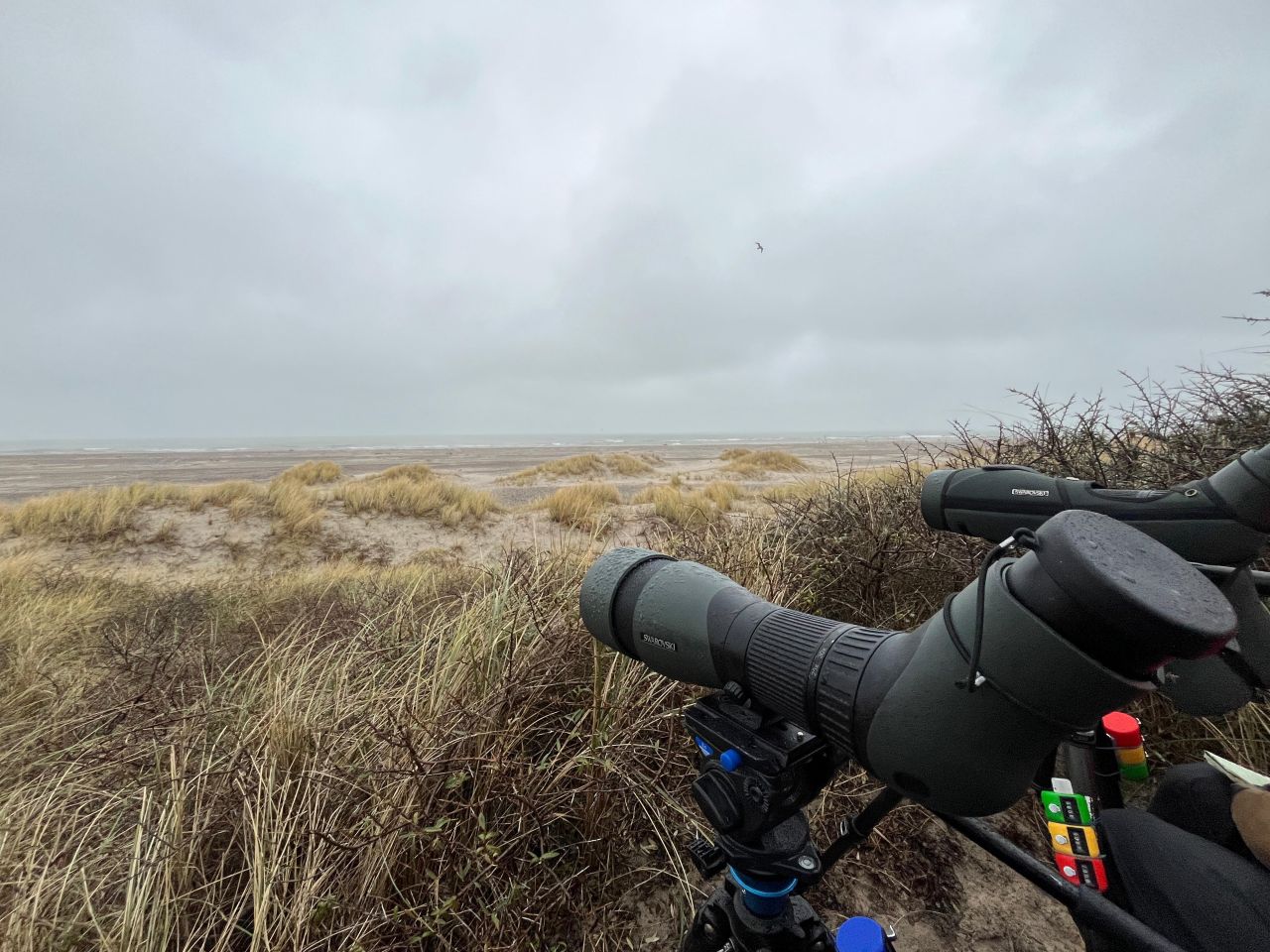 Observers counting hundreds of Red-throated Divers. Photo by Florian
Observers counting hundreds of Red-throated Divers. Photo by Florian
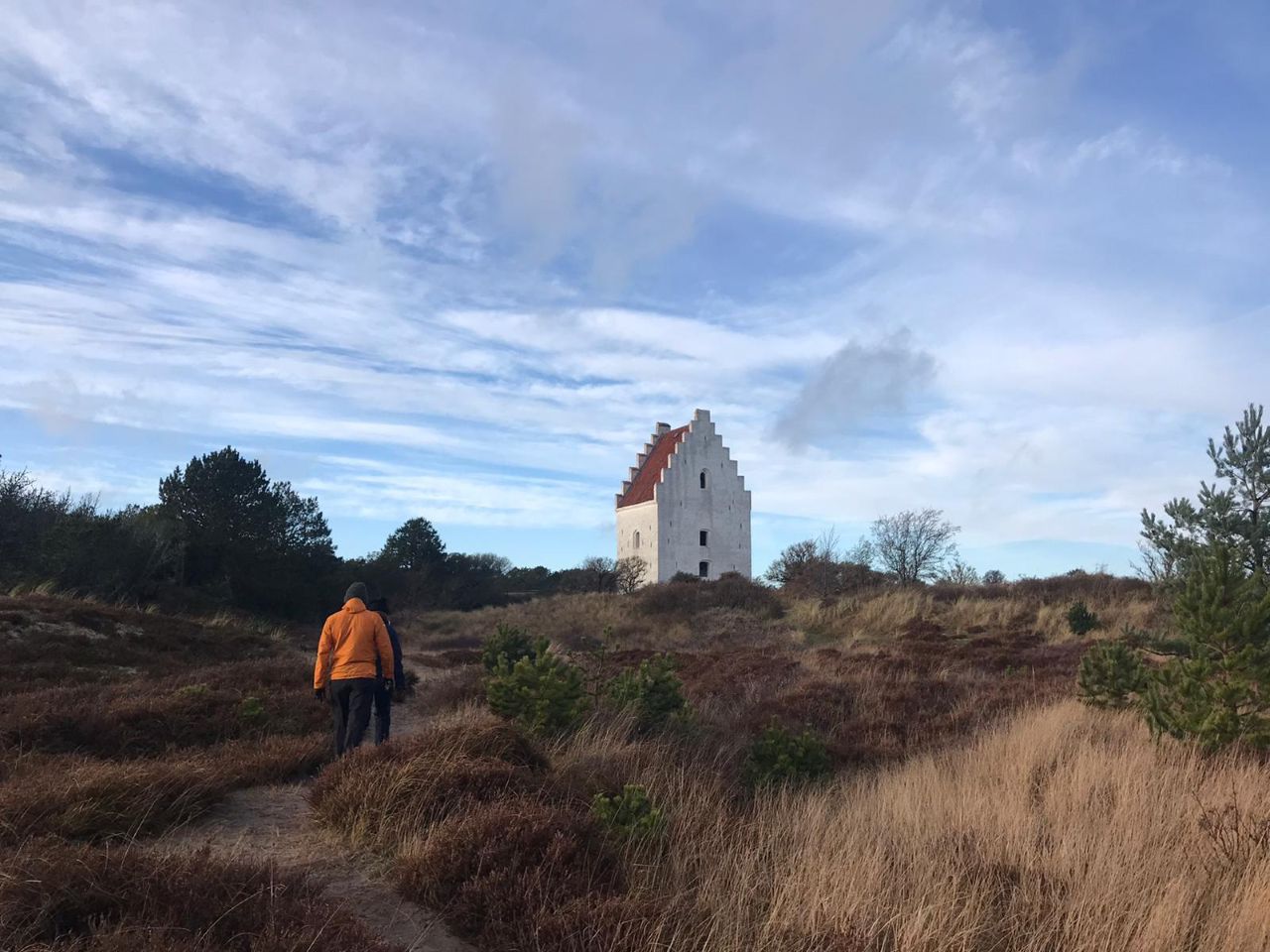
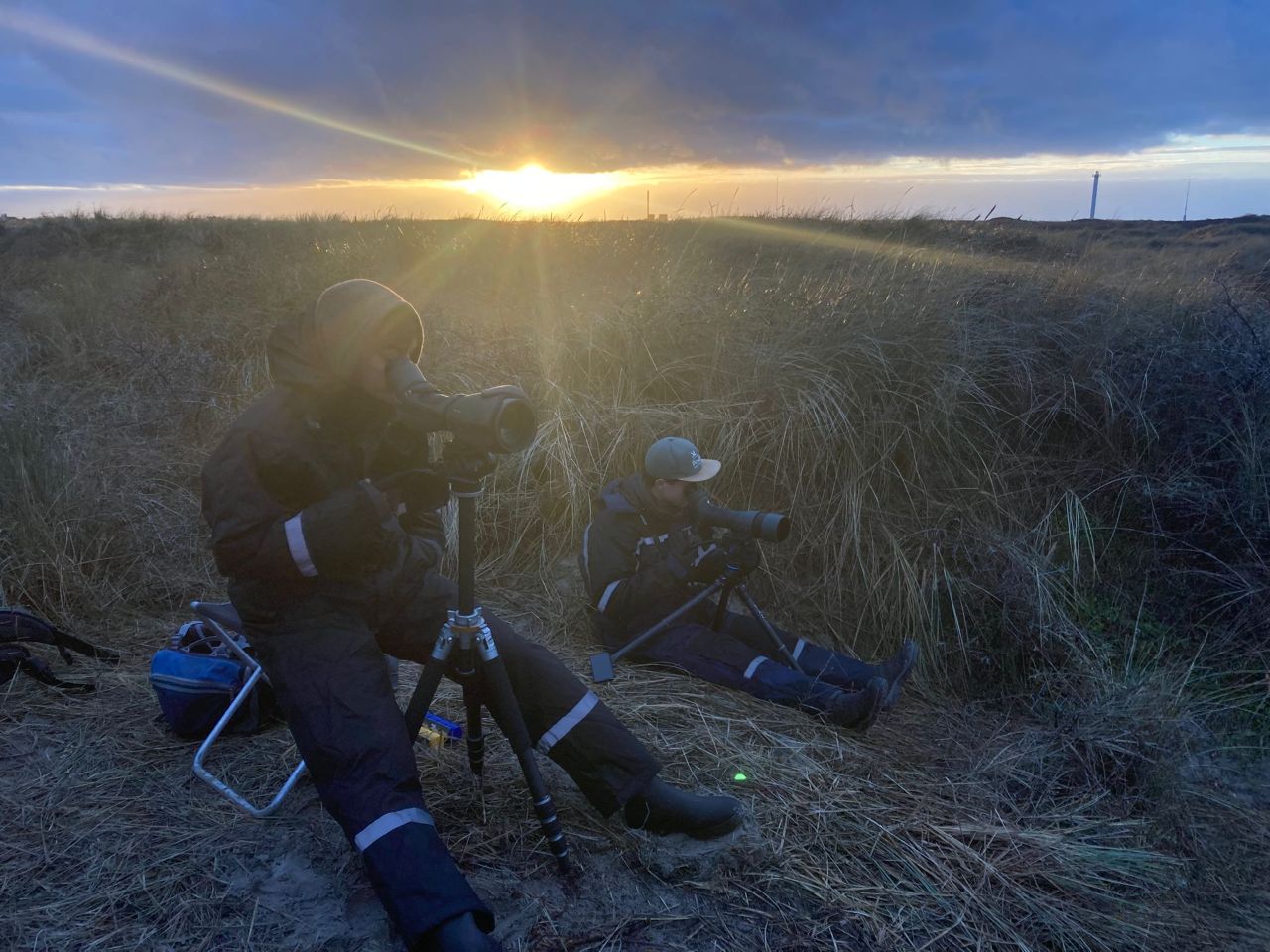
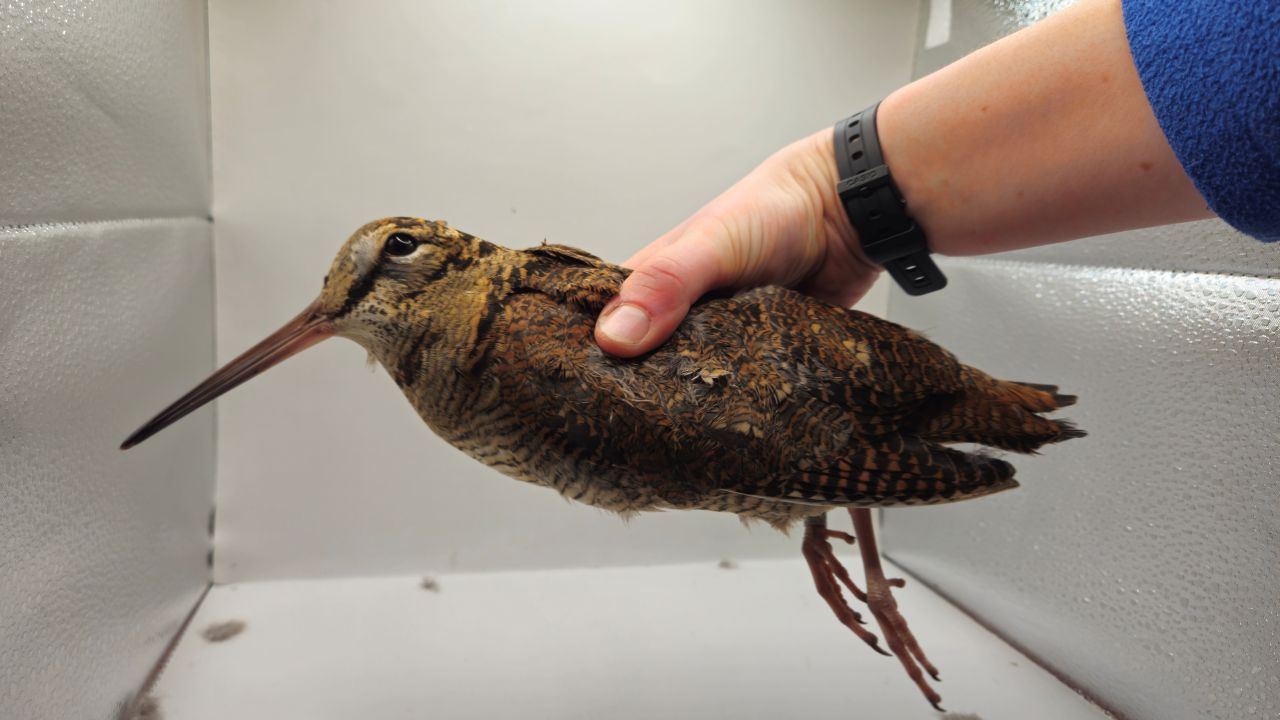
Standard ringing season has finished for 2025!
Link to today’s observations from the area
People: Miles Scheuering, János Schadl, Florian Hatt, Amira Nuseibeh, Lise Mastrup, and our guests (Lise’s friends) Kat and Vic.
